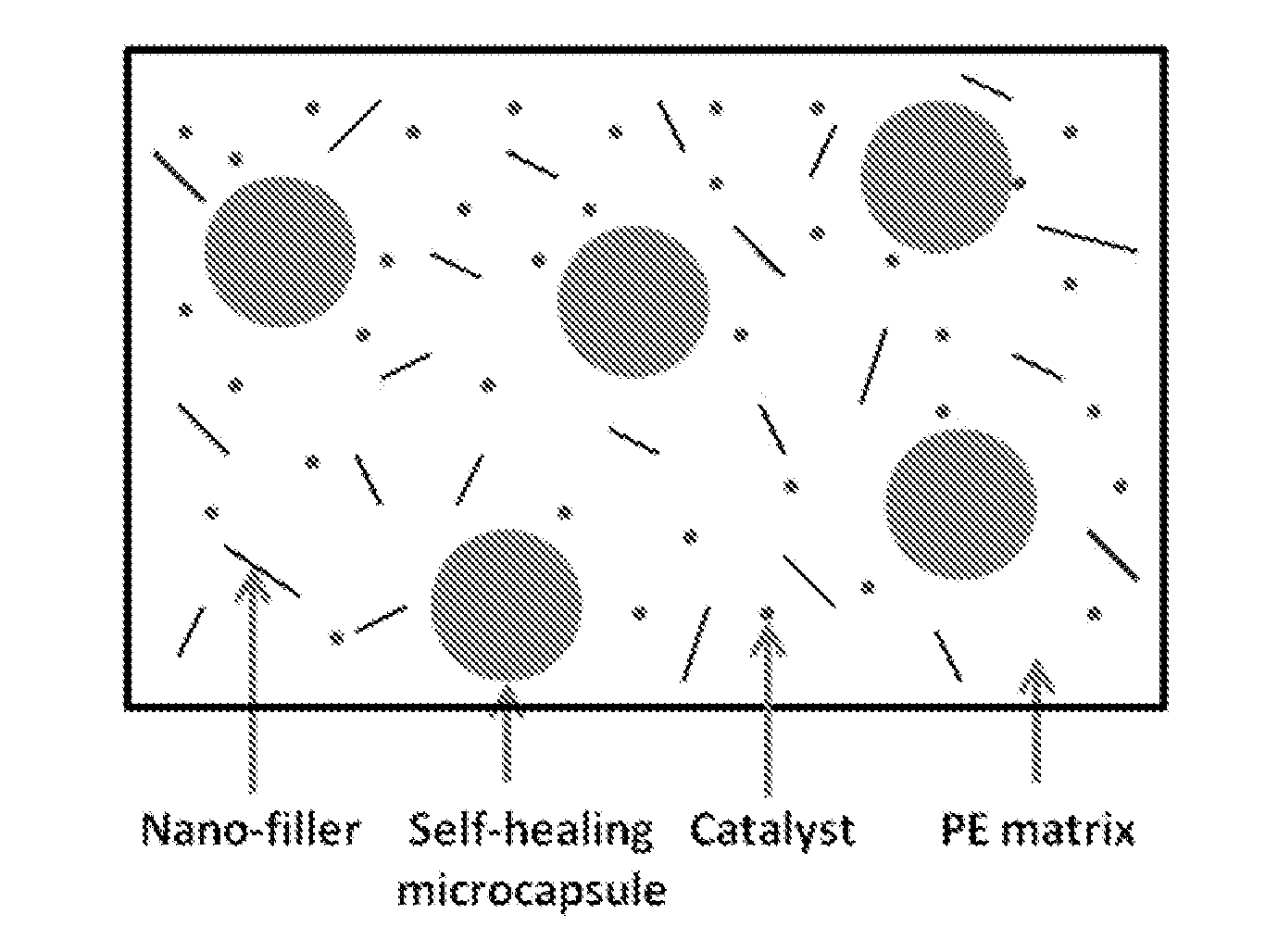Self-Healing Polyethylene
a polyethylene and self-healing technology, applied in the field of self-healing polyethylene, can solve the problems of premature failure of piping systems, and reducing the strength of composite structures, and achieves the effect of long-term durability and exceptional chemical resistan
- Summary
- Abstract
- Description
- Claims
- Application Information
AI Technical Summary
Benefits of technology
Problems solved by technology
Method used
Image
Examples
Embodiment Construction
[0007]Embodiments of the present invention protect against degradation of the PE matrix through the incorporation of self-healing abilities. Induced by thermal and mechanical fatigue, microcracking is a long-standing problem in PE pipes. If the PE pipes integrated microcapsules filled with a self-healing agent and catalyst, the polymerization of the healing agent, triggered by contact with the embedded catalyst, can bond the crack faces to recover the original, mechanical properties.
[0008]The first use of self-healing for a polymer composite was in 1996 (see, e.g., C. Dry, “Procedures Developed for Self-Repair of Polymeric Matrix Composite Materials,” Composite Structures 35, pp. 263-269 (1996)). Dry showed positive results in the feasibility of developing polymer matrix composites that have the ability to self-repair internal cracks caused by mechanical loading. The study focused on the cracking of hollow repair fibers dispersed in a matrix and the subsequent, timed release of repa...
PUM
| Property | Measurement | Unit |
|---|---|---|
| Size | aaaaa | aaaaa |
| Density | aaaaa | aaaaa |
| Thermoplasticity | aaaaa | aaaaa |
Abstract
Description
Claims
Application Information
 Login to View More
Login to View More - R&D
- Intellectual Property
- Life Sciences
- Materials
- Tech Scout
- Unparalleled Data Quality
- Higher Quality Content
- 60% Fewer Hallucinations
Browse by: Latest US Patents, China's latest patents, Technical Efficacy Thesaurus, Application Domain, Technology Topic, Popular Technical Reports.
© 2025 PatSnap. All rights reserved.Legal|Privacy policy|Modern Slavery Act Transparency Statement|Sitemap|About US| Contact US: help@patsnap.com


